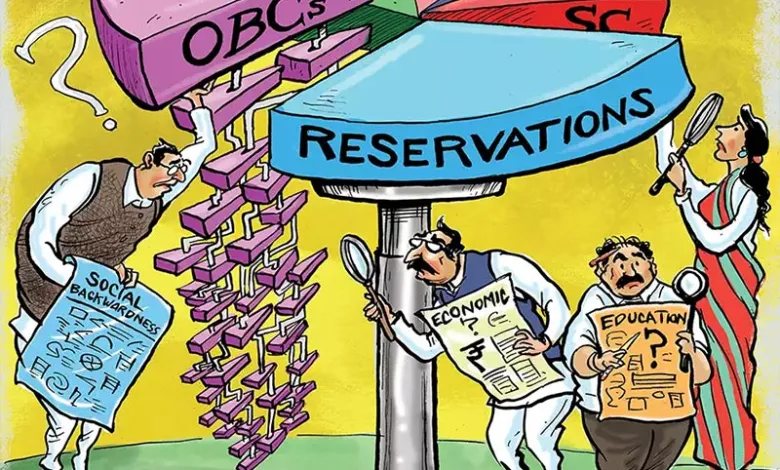Description

Copyright infringement not intended
Context: The Rohini Commission, headed by retired Justice G Rohini, was set up in 2017 by the Union government to examine the feasibility and criteria for the sub-categorisation of OBCs. The commission submitted its long-awaited report to the President, after several extensions of its tenure. The report is widely expected to be politically sensitive, with a direct bearing on the electoral calculations of parties ahead of Lok Sabha elections. The contents of the report have not been made public as yet.
Details
- The sub-categorisation of OBCs is a process of dividing the existing list of Other Backward Classes into smaller groups based on their relative socioeconomic status and educational attainment. The aim is to ensure that the benefits of reservation policies reach the most backward and marginalised sections within the OBCs and not just a few dominant communities.
Background
- The need for sub-categorization of OBCs arises from the perception that only a few affluent communities among them have disproportionately benefited from the existing 27% reservation quota in central government jobs and educational institutions. There are more than 2,600 entries in the Central List of OBCs, but the benefits of reservation are believed to have been concentrated among a limited number of communities within the OBC category. As a result, many other OBC communities have not received adequate representation and benefits from the reservation policy.
- The sub-categorization of OBCs aims to address this imbalance by creating quotas within the overall 27% OBC reservation. By dividing the reservation quota into smaller sub-quotas, it is intended to ensure a more equitable distribution of reservation benefits among different OBC communities based on their socioeconomic status and historical disadvantage.
Justice Rohini Commission
- It was set up in 2017 to investigate how reservation benefits were distributed unevenly among different OBC castes and communities.
- The commission had the following objectives:
- To examine the representation of OBCs in the Central List of Reservation in central government jobs and higher education institutions.
- To devise a scientific method to sub-categorize OBCs based on various criteria, norms, and parameters.
- To identify and classify the castes, communities, sub-castes, or synonyms in the Central List into their respective sub-categories.
- To suggest corrections for any mistakes, ambiguities, inconsistencies, and errors of spelling or transcription in the Central List of OBCs.
- The commission analyzed data on central government jobs and admissions to central higher education institutions under the OBC quota. It discovered that a few OBC castes had received a large share of jobs and educational seats, while many OBC communities had little or no representation in these sectors.
Must-Read Articles:
SUB-CATEGORISATION OF OBCs: https://www.iasgyan.in/daily-current-affairs/sub-categorisation-of-obcs
CENTRAL OBC LIST: https://www.iasgyan.in/daily-current-affairs/central-obc-list
SURVEY OF OBC CASTES: https://www.iasgyan.in/daily-current-affairs/survey-of-obc-castes
|
PRACTICE QUESTION
Q. What is the need for providing reservations to marginalized sections in society? What is the significance and impact of such affirmative action policies? What are the main challenges faced in implementing reservations, and what could be the way forward to create a more equitable and inclusive society?
|
.jpg)
https://indianexpress.com/article/explained/rohini-panel-report-what-is-sub-categorisation-of-obc-8871628/















